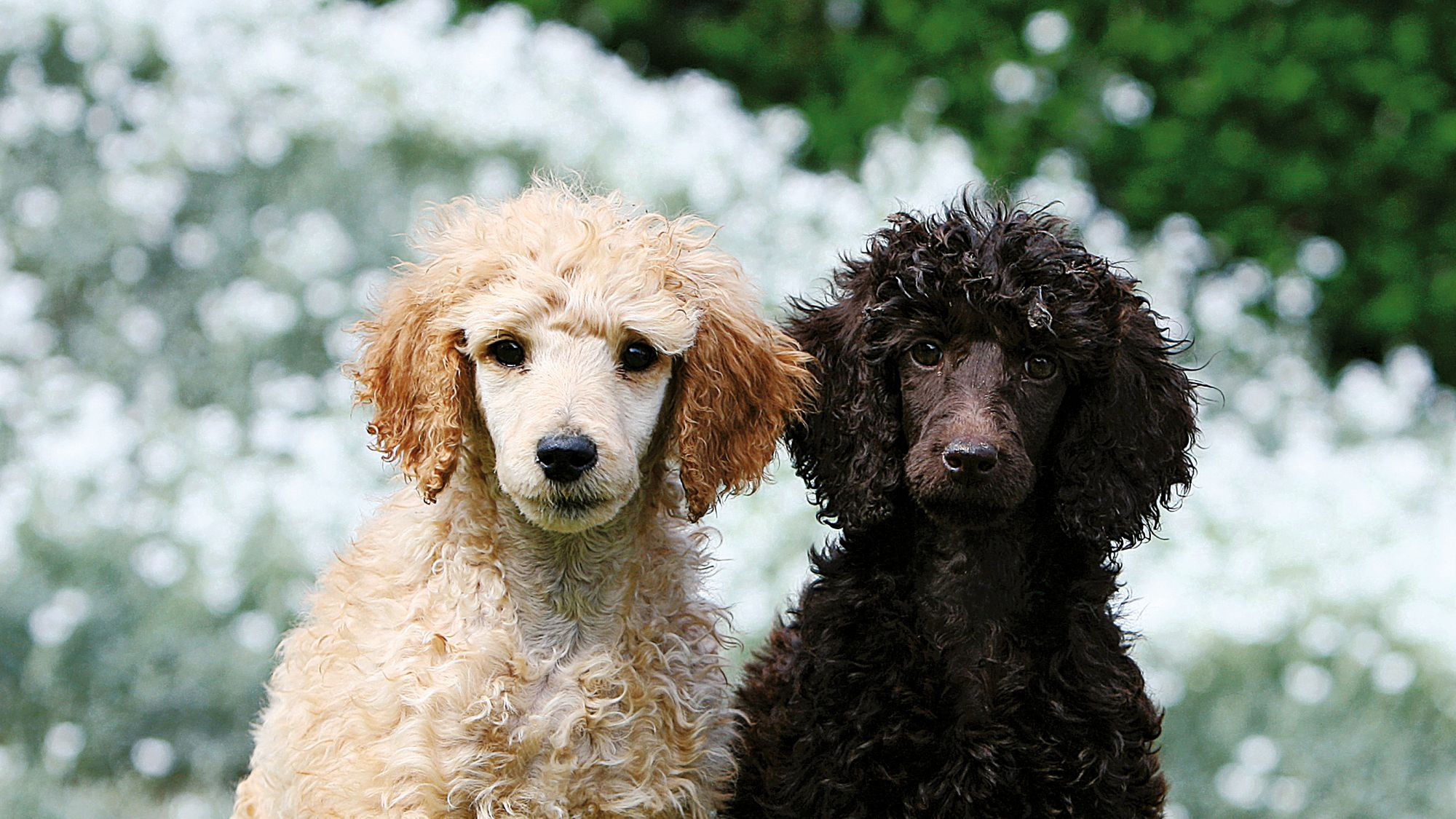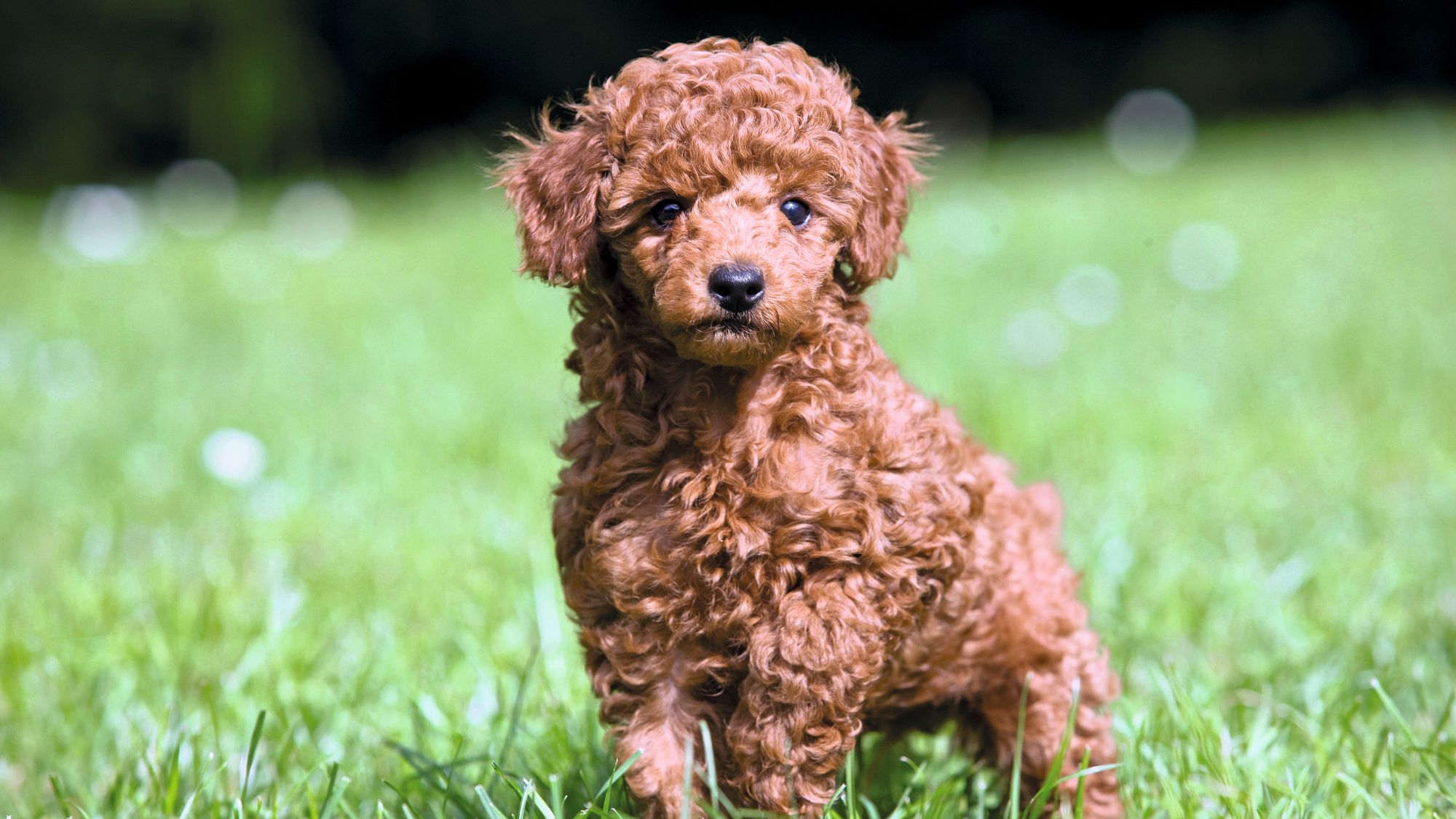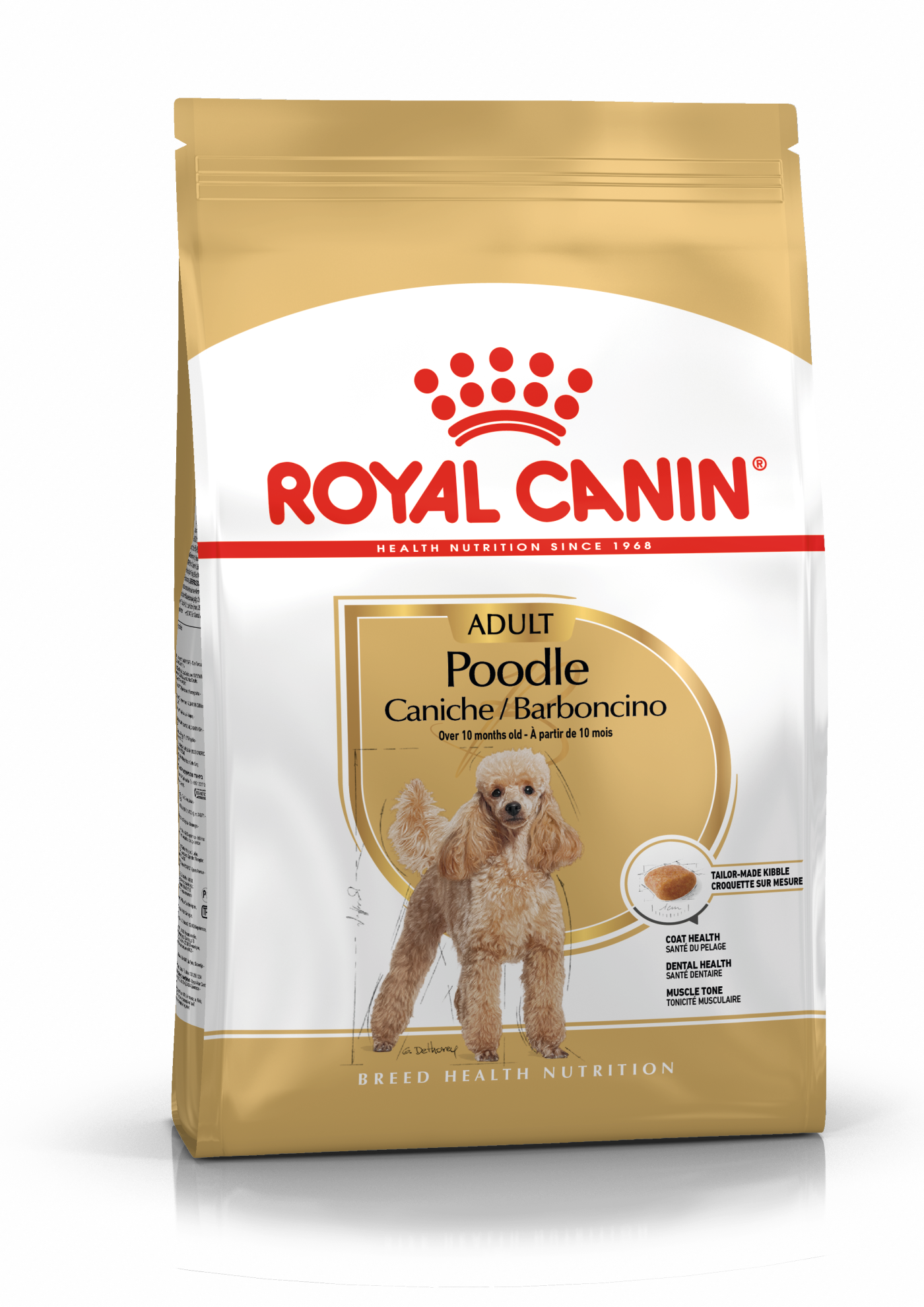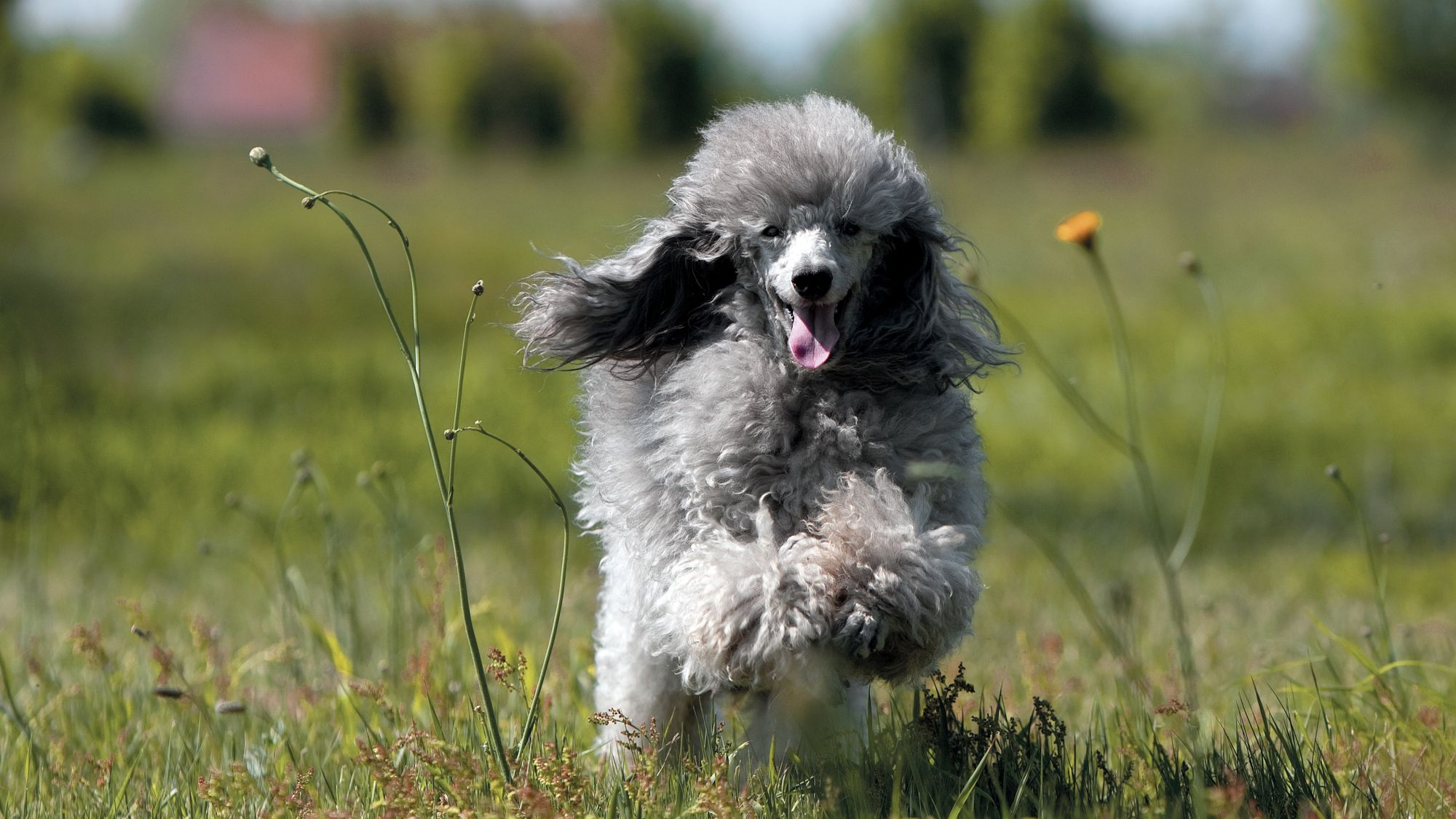Let's talk Poodles
That agile gait, the regal demeanour, those enviable coiffes. You might take Poodles for the supermodels of the dog world; however, there is much more to this very old breed than meets the eye. Once bred for waterfowling, Poodles are natural athletes and inherently task-oriented. Whether it’s the Toy, Miniature or Standard variety, these top-of-the-class-clever dogs excel in various roles, from show dogs to therapy animals. Their distinctive curly fur and proud posture make them stand out in any crowd. So It's no surprise that Poodles are cherished worldwide for their beauty and brains.
Official name: Poodle
Other names: Caniche (France)
Origins: Germany
Drooling tendencies
1 out of 5Grooming needs
5 out of 5Shedding Level
1 out of 5Barking tendencies
2 out of 5Energy level
3 out of 5Compatibility with other pets
4 out of 5Warm weather?
3 out of 5Cold weather?
3 out of 5Suited to apartment living
4 out of 5Can stay alone
3 out of 5Family pet
4 out of 5
| Male | Female |
|---|---|
| Height | Height |
| 33 - 43 cm | 33 - 43 cm |
| Weight | Weight |
| 11 - 12 kg | 10 - 11 kg |
| Life Stage | |
|---|---|
| Adult | |
| 12 months to 7 years | |
| Mature | Senior |
| 7 to 10 years | 10 to 16 years |
| Baby | |
| Birth to 2 months | |
Drooling tendencies
1 out of 5Grooming needs
5 out of 5Shedding Level
1 out of 5Barking tendencies
2 out of 5Energy level
3 out of 5Compatibility with other pets
4 out of 5Warm weather?
3 out of 5Cold weather?
3 out of 5Suited to apartment living
4 out of 5Can stay alone
3 out of 5Family pet
4 out of 5
| Male | Female |
|---|---|
| Height | Height |
| 33 - 43 cm | 33 - 43 cm |
| Weight | Weight |
| 11 - 12 kg | 10 - 11 kg |
| Life Stage | |
|---|---|
| Adult | |
| 12 months to 7 years | |
| Mature | Senior |
| 7 to 10 years | 10 to 16 years |
| Baby | |
| Birth to 2 months | |
Tailored nutrition for your Poodle

Get to know the Poodle
All you need to know about the breed
Sharp-witted, athletic dogs with a natural, noble elegance, Poodles are exuberant dogs that come in three sizes: Toy, Miniature, and Standard.
Originally used by European hunters to retrieve game from streams and lakes, Poodles are highly alert, eager to please, and task-driven. With an English name derived from the German word for splashing about in water, and a French name, Caniche, that comes from “cane,” meaning female duck, it’s no surprise that these dogs are excellent jumpers and swimmers.
Misconceptions about their disposition are usually based on their distinct “clips” or grooming styles, which once had the practical purpose of keeping vital areas warm with longer hair while clipping other areas short to allow for ease of movement in water. Of course, there is also an aesthetic intention behind that eye-catching look, as Poodles have been favored companions of the fashion-focused for centuries and are regular competitors and winners in dog shows.
Poodles are keenly sensitive and adapt very well to people. This, combined with their substantial energy, means they thrive on attention and commands. With firm training and regular exercise, Poodles make excellent companions that are well-behaved around children and other animals.

Facts about Poodles
1. A history of utility and elegance
Poodles were originally bred as water retrievers, and their name comes from the German word "Pudel," meaning "to splash in water." Their distinctive grooming style, featuring shaved legs and a pom-pom tail, was designed to help them move more efficiently in the water while protecting vital organs and joints from the cold.
2. They require their beauty sleep
It just wouldn’t be fair if these knockout pooches got to be striking, smart, and athletic all with only a short night’s sleep. In fact, Poodles really like their shut-eye, with puppies getting around 15 hours of snooze time per day and adults around 12-13 hours per day. So, don’t be surprised if your Poodle gets in more than forty winks - being this beautiful takes rest!²
History of the breed
Established in Germany as a breed used for bird hunting and water retrieval over four centuries ago, the Poodle’s name comes from the German word “pudel” or “pudelin,” meaning to splash around in water. The Poodle’s trainability, athletic prowess, and well-proportioned build quickly made them a sought-after breed.
Poodles became so popular that breeders began producing smaller versions—the Miniature followed by the Toy—each suited to different roles and environments. The French used the Standard Poodle for hunting, while tasking the medium-sized Miniature with truffle hunting and the Toy with being a companion to the upper echelons of society.
In 1874, England’s Kennel Club registered its very first Poodle, and the American Kennel Club followed soon after, registering them in 1886. However, the breed didn’t enjoy solid success overseas until after World War II, reaching peak popularity in the 1950s and enjoying a two-decade run as the country’s preferred pup.
Nowadays, the popularity of Poodles have seen a huge increase with them becoming one of the most popular dog breeds in the US as they make excellent family pets and companions.
From head to tail
Physical characteristics of Poodles
1.Head
2.Face
3.Body
4.Tail
5.Coat

Things to look out for
From specific breed traits to a general health overview, here are some interesting facts about your Poodle
Excitement or something more?
Poodles are naturally athletic and highly active, so it isn’t surprising when they take it up a notch and launch into zoomies - that behaviour when they start racing around and around in circles…. However, if the running seems more nervous than excited, they might be experiencing a seizure. There are many potential causes for seizures, so a trip to the veterinarian as soon as you notice anything unusual will help you catch anything early.
Look out for signs of hip dysplasia
Like many breeds, Poodles can suffer from the genetic disorder known as hip dysplasia, a condition where the femur slides partially out of the hip socket due to the malformation of the latter. Potential signs include decreased movement, “bunny hopping” gait, and/ or reluctance to run, jump, or climb stairs.
If left unchecked, hip dysplasia can develop into arthritis and, eventually lameness. The good news is, regular X-rays and check-ups with your veterinarian give you a head start in supporting your dog and ensuring best possible care.
Keep an eye open for eye issues
Another condition observed in some Poodles, particularly in the Miniature and Toy varieties, is PRA – progressive retinal atrophy. PRA encompasses a range of eye diseases that can cause the retina to gradually deteriorate. An early manifestation of PRA is night blindness, which can sometimes cross over into the day. Remember to ask your veterinarian for a PRA DNA test, which will help you stay on top of any potential issues.
Healthy diet, healthier dog

When choosing food for a Miniature Poodle, there are many factors to consider: their age, lifestyle, activity level, physiological condition, and health including potential sickness or sensitivities. Food provides energy to cover a dog’s vital functions, and a complete nutritional formula should contain an adjusted balance of nutrients to avoid any deficiency or excess in their diet, both of which could have adverse effects on the dog.
Clean and fresh water should be available at all times to support good urinary regularity. In hot weather and especially when out exercising, bring water along for your dog’s frequent water breaks.
The following recommendations are for healthy animals. If your dog has health problems, please consult your veterinarian who will prescribe an exclusively veterinary diet.
A Miniature Poodle puppy’s requirements, in terms of energy, protein, minerals and vitamins, are much greater than those of an adult dog. They need energy and nutrients to maintain their body, but also to grow and build it. Until they are 10 months old, a Miniature Poodle puppies’ immune system develops gradually. A complex of antioxidants - including vitamin E - can help support their natural defences during this time of big changes, discoveries, and new encounters. Their digestive functions are different from an adult Miniature Poodle’s, too: their digestive system is not mature yet so it’s important to provide highly digestible proteins that will be effectively used. Prebiotics such as fructo-oligosaccharides, support digestive health by helping balance the intestinal flora, resulting in good stool.
Similarly, a puppy’s teeth – starting with the milk teeth, or first teeth, then the permanent teeth – are an important factor that needs to be taken into account when choosing the size, form, and hardness of kibble. This intense growth phase also means high energy needs, so the food must have a high energy content (expressed in Kcal/100g of food), while concentrations of all other nutrients will also be higher than normal in a specially formulated growth food. It is recommended to split the daily allowance into three meals until they are six months old, then to switch to two meals per day.

The main nutritional goals for adult Miniature Poodles are:
Maintaining an ideal body weight by using highly digestible ingredients and keeping the fat content at a sensible level
Preserving the health and beauty of the skin and coat with the enriched addition of essential fatty acids (especially EPA and DHA), essential amino acids, and B vitamins.
At adult age, small breed dogs are prone to oral and dental disorders, more precisely, accumulation of dental plaque and tartar. The Miniature Poodle’s teeth and jaws need a lot of protection. A kibble shape and a texture designed to promote chewing can help in slowing down the formation of dental plaque, and a formula containing calcium chelators can help reduce tartar formation, hence helping to support daily oral hygiene. Small breed dogs are well known for being fussy eaters. Exclusive formula and flavourings, as well as a kibble size with a special texture, will stimulate their appetite. Small breed dogs are prone to urinary stones; a diet that supports a healthy urinary system is recommended.
For Miniature Poodles living mainly indoors, highly digestible proteins, an appropriate fibre content, and very high quality carbohydrate sources will help reduce fecal smell and volume. Because an indoor lifestyle often means less exercise, an adapted calorie content, which meets the reduced energy needs, and a diet that contains L-carnitine, which promotes fat metabolism, can help maintain an ideal weight. It is important to avoid feeding them human foods or fatty snacks. Instead, reward your dog with kibble taken from their daily meal allowance, and strictly follow the feeding guidelines written on the package in order to prevent excessive weight gain.

After 7 years old, Miniature Poodles start facing the first signs of ageing. A formula enriched with antioxidants will help maintain their vitality and an adapted phosphorus content will support their renal system. Ageing is also accompanied by the modification of digestive capacities and particular nutritional requirements, so food for older Miniature Poodles should have the following characteristics:
Higher vitamin C and E content. These nutrients have antioxidant properties, helping to protect the body’s cells against the harmful effects of the oxidative stress linked to ageing.
High-quality protein. Contrary to a widely held misconception, lowering the protein content in food brings little benefit in limiting kidney failure. On top of it, older dogs are less efficient at using dietary protein than younger dogs. Reducing the phosphorus content is a good way of slowing down the gradual deterioration of kidney function
A higher proportion of the trace elements iron, copper, zinc, and manganese to help maintain good condition of the skin and coat.
A higher quantity of polyunsaturated fatty acids (omega-3 and omega-6 fatty acids) to maintain the quality of the coat. Dogs can normally produce these fatty acids, but ageing can affect this physiological process.
As they age, dogs increasingly suffer from teeth problems. To ensure they continue to eat in sufficient quantities, the size, shape, and texture of their kibble need to be tailored to their jaw. An adapted kibble shape may help reduce the rate of food intake to help your dog maintain a healthy body weight.

Caring for your Poodle
Grooming, training, and exercise tips
Poodles enjoy innate agility and athletic prowess coupled with energy to burn. As such, they should get moderate, regular exercise to ensure good physical health. It is recommended that your Poodle enjoy a minimum of one to three hours of exercise a day. Since they benefit greatly from activities, long walks, jogs, retrieving, and swimming are just a few great ways to help Poodles channel all of that energy.
Poodles are a non-shedding breed with thick, curly – even wiry - hair that can be styled to suit a broad range of owner tastes. However, potential poodle owners should know that grooming the breed is a serious commitment that many prefer to outsource to professionals. And because Poodles should be groomed every three to six weeks, this can be a considerable expense. Some owners opt for an easier-to-maintain short clip, but this still requires regular brushing since the hair can quickly become matted.
The upshot is that, because the Poodle has a mostly non-shedding coat, they are a good choice for people with allergies!
As far as training is concerned, Poodles go straight to the head of the class. With their sharp intelligence, athletic predisposition and profound desire to please, Poodles learn quickly and love being given a job.
In addition, early training and socialization helps them channel their abundant supply of energy and curb any predisposition to possessiveness. As they are highly responsive, reward-based training with treats and/ or favourite toys is an excellent approach to teaching them. Poodles enjoy being around people and need a fair amount of exercise. A Poodle that is left alone for long periods of time could turn toward destructive behaviour. Remember, a busy Poodle is a thriving Poodle!
Poodles enjoy innate agility and athletic prowess coupled with energy to burn. As such, they should get moderate, regular exercise to ensure good physical health. It is recommended that your Poodle enjoy a minimum of one to three hours of exercise a day. Since they benefit greatly from activities, long walks, jogs, retrieving, and swimming are just a few great ways to help Poodles channel all of that energy.
Poodles are a non-shedding breed with thick, curly – even wiry - hair that can be styled to suit a broad range of owner tastes. However, potential poodle owners should know that grooming the breed is a serious commitment that many prefer to outsource to professionals. And because Poodles should be groomed every three to six weeks, this can be a considerable expense. Some owners opt for an easier-to-maintain short clip, but this still requires regular brushing since the hair can quickly become matted.
The upshot is that, because the Poodle has a mostly non-shedding coat, they are a good choice for people with allergies!
As far as training is concerned, Poodles go straight to the head of the class. With their sharp intelligence, athletic predisposition and profound desire to please, Poodles learn quickly and love being given a job.
In addition, early training and socialization helps them channel their abundant supply of energy and curb any predisposition to possessiveness. As they are highly responsive, reward-based training with treats and/ or favourite toys is an excellent approach to teaching them. Poodles enjoy being around people and need a fair amount of exercise. A Poodle that is left alone for long periods of time could turn toward destructive behaviour. Remember, a busy Poodle is a thriving Poodle!
7/7
All about Poodles
While they are considered “moderate” barkers, Poodles never bark for no reason. Those reasons can include being left alone for long periods of time, passersby, excitement, etc. Luckily, this breed responds extremely well to solid, early training and can learn to stifle that bark.
In a word, yes. While they like to stay active during the days and are independent, an aspect that Poodle owners appreciate about the breed, Poodles have another side to them and are generally up for a good snuggle with their humans when the day is done.
Read more on this topic
Sources
- Veterinary Centres of America https://vcahospitals.com/
- Royal Canin Dog Encyclopaedia. Ed 2010 and 2020
- Banfield Pet Hospital https://www.banfield.com/
- Royal Canin BHN Product Book
- American Kennel Club https://www.akc.org/
Like & share this page